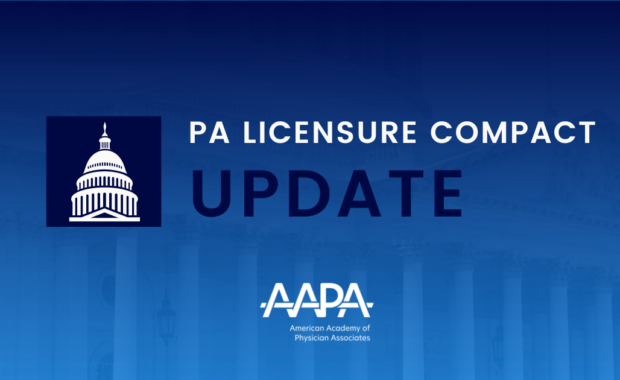PAs and Consent to Settle
Understand the Intricacies of Your Malpractice Insurance
April 3, 2018
By Gary McCammon
If you are accused of a medical error while working as a PA, you look to your malpractice insurance to pay any amounts due to the injured party (the plaintiff). Sometimes, a judge or jury determines this amount after the proceedings of a trial. Much more often, though, the amount is determined through negotiation between the plaintiff’s attorney and your attorney. The legal costs of taking the case to a final verdict are so high that both sides are willing to strike a deal rather than incur the trial costs and risk the uncertainty of a less favorable outcome.
In any malpractice situation, a big chunk of your insurance premiums go to the legal profession – attorney feeds, expert witnesses, and compilation of records. Your insurance company has every incentive to reduce this payout. The company has the duty to defend you, which obligates it to incur these costs. However, the company also has the right to defend you, which essentially means that the company takes your place in calling the shots, since the company’s assets are now at risk. But what if the company wants to settle a claim to avoid litigation costs but you did nothing wrong? The settlement will follow you for the rest of your career, and a large payout will imply that you did err in treating a patient. This exposes the insurer to allegations of conflict of interest because there is an apparent trade-off between its own economic expediency and your professional reputation.
The solution to this dilemma for the insurance company is the “consent to settle” provision found in most malpractice policies. In its simplest form, it requires the insurer to obtain your written consent prior to finalizing a settlement with the plaintiff. If you refuse, the company continues to defend you, taking the case to trial if necessary.
Beware: most consent to settle provisions contain the so-called “hammer clause.” The insurer must still obtain your consent, but if you refuse, you will be liable for the difference between the settlement amount and any final verdict. Assume, for example, the insurer negotiated a settlement of $500,000, and you refused consent. The court awards a verdict of $1,000,000, which would otherwise have been covered by your policy. However, the company is only liable for the $500,000, leaving you responsible to pay the additional $500,000.
So, if you buy your own policy, look for full consent to settle with no hammer clause. The AAPA-endorsed insurance program has this. Most others do not.
What if you don’t have your own policy? If your employer adds you to his policy, do you have the same opportunity to consent to any settlement? Not likely. The employer is the policyholder or “named insured,” and therefore entitled to render consent in a settlement. You are an “insured” or “additional insured,” and so not entitled. The insurance company can make any settlement it deems expedient, subject to the employer’s consent, even if the allocation of liability in the settlement weighs disproportionately against you.
If you are an additional insured and you and your policyholder/physician are sued and he is offered a settlement of $500,000, the physician accepts and the physician’s insurance company must report the claim to the National Practitioner Data Bank. The physician suggests that the bulk of the liability was due to your error and the claim should be reported: $50,000 for the physician and $450,000 for you. Since you’re not a policyholder, you don’t get a say in the reporting, although it’s ultimately up to the insurance company to determine relative fault.
Because full consent to settle has many intricacies, and malpractice insurance is important to any healthcare provider, PAs should research and obtain their own individual insurance policies. AAPA Insurance offers consent to settle with no hammer clause, and might be the right choice for you.
Gary McCammon works for AAPA’s Insurance Services. Contact [email protected] for insurance-related questions.
Thank you for reading AAPA’s News Central
You have 2 articles left this month. Create a free account to read more stories, or become a member for more access to exclusive benefits! Already have an account? Log in.



